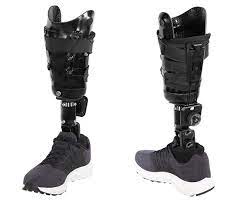
The Prosthetic Socket: A Crucial Link in the Chain of Mobility:
Normal
0
false
false
false
EN-US
X-NONE
X-NONE
/* Style Definitions */
table.MsoNormalTable
{mso-style-name:”Table Normal”;
mso-tstyle-rowband-size:0;
mso-tstyle-colband-size:0;
mso-style-noshow:yes;
mso-style-priority:99;
mso-style-parent:””;
mso-padding-alt:0in 5.4pt 0in 5.4pt;
mso-para-margin-top:0in;
mso-para-margin-right:0in;
mso-para-margin-bottom:8.0pt;
mso-para-margin-left:0in;
line-height:107%;
mso-pagination:widow-orphan;
font-size:11.0pt;
font-family:”Calibri”,sans-serif;
mso-ascii-font-family:Calibri;
mso-ascii-theme-font:minor-latin;
mso-hansi-font-family:Calibri;
mso-hansi-theme-font:minor-latin;
mso-bidi-font-family:”Times New Roman”;
mso-bidi-theme-font:minor-bidi;}
Introduction:
In the world of prosthetic limbs, the prosthetic socket is an unsung hero. This seemingly unassuming component, which connects the residual limb to the artificial limb, plays a vital role in determining the comfort, function, and overall success of the prosthetic leg. This article delves into the significance of the prosthetic socket and its role in enhancing the lives of amputees.
The Prosthetic Socket: The Essential Connection:
A prosthesis socket is the interface that bridges the gap between the amputee’s residual limb and the prosthetic leg. This component is a linchpin, responsible for bearing the load, transferring motion, and ensuring that the prosthetic limb remains securely attached to the body.
Customization for a Perfect Fit:
One of the most critical aspects of the prosthetic socket is its customization. No two residual limbs are alike, making it imperative that each socket be tailored to the individual amputee. Skilled prosthetists work closely with their patients to ensure that the socket is a precise match for the residual limb’s size, shape, and unique contours.
Materials Matter:
The choice of materials for the prosthetic socket is another crucial consideration. Common materials include thermoplastics, carbon fiber, and silicone, each with its own set of advantages and drawbacks. The selection often hinges on factors such as the user’s weight, activity level, and skin sensitivity.
Designing for Comfort and Functionality:
Modern prosthetic socket designs are engineered for optimal comfort and functionality. They are crafted to evenly distribute pressure across the residual limb to prevent skin irritation and discomfort. The shape and structure of the socket are also tailored to accommodate the user’s specific mobility needs and lifestyle.
Achieving a Secure Attachment:
Two primary methods are employed to ensure a secure attachment between the prosthetic socket and the residual limb: suction and suspension. Suction sockets create a vacuum-like seal, keeping the prosthetic leg firmly in place. Suspension sockets rely on straps or harnesses to maintain the connection. The choice of method depends on individual needs and preferences, as well as the nature of the amputation.
Adaptive Sockets: Adjusting to Change:
One of the remarkable advancements in prosthetic socket design is the development of adaptive sockets. These sockets incorporate specialized materials that can conform to changes in the residual limb’s size and shape. They provide a snug and reliable fit, even as the limb experiences fluctuations, reducing the need for frequent socket adjustments or replacements.
Empowering Lives:
The impact of a well-fitted prosthetic socket goes far beyond physical comfort. It is a gateway to a world of opportunities. It allows amputees to engage in a wide range of activities, from walking and running to cycling and even swimming. This comfort and security extend to the emotional realm, fostering independence, self-esteem, and a vibrant, active lifestyle.
Conclusion:
The prosthetic socket stands as a testament to the integration of art and science in the field of prosthetic limb design. It is the keystone that connects amputees to mobility and newfound freedom. The customization, choice of materials, and innovative technology within the socket for prosthetic leg contribute to a more inclusive, active world for those who have faced limb loss.
As technology continues to advance, prosthetic sockets will continue to evolve, further enhancing the lives of amputees. The future holds the promise of even more personalized, comfortable, and adaptable prosthetic solutions. The prosthetic socket is an integral part of the journey toward a brighter and more mobile future for individuals who have experienced limb loss.


